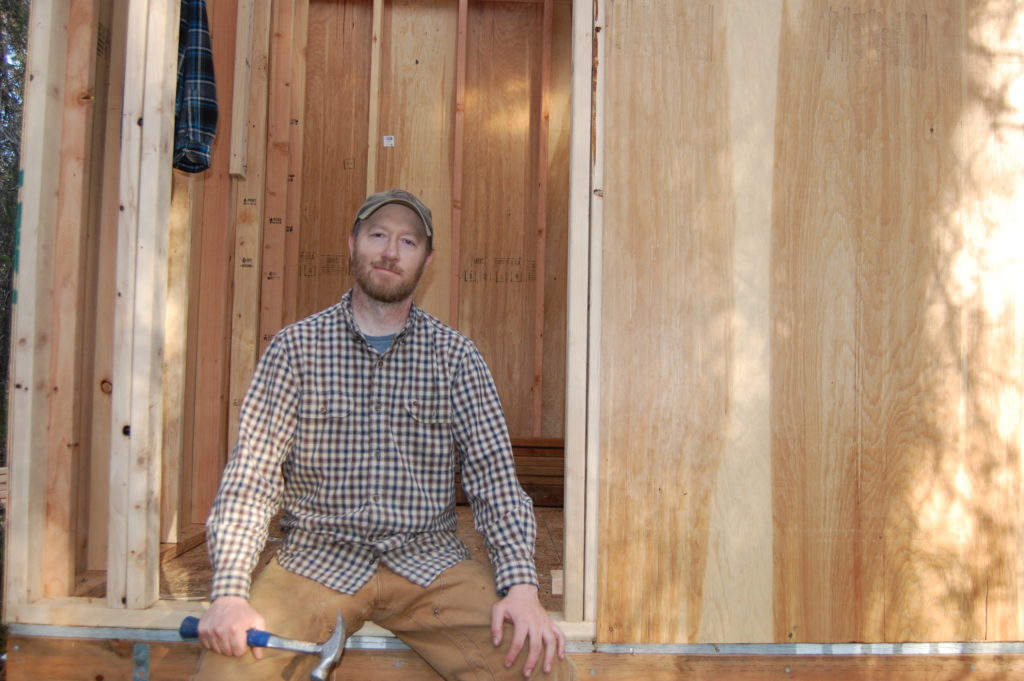Building my first tiny cabin in Alaska
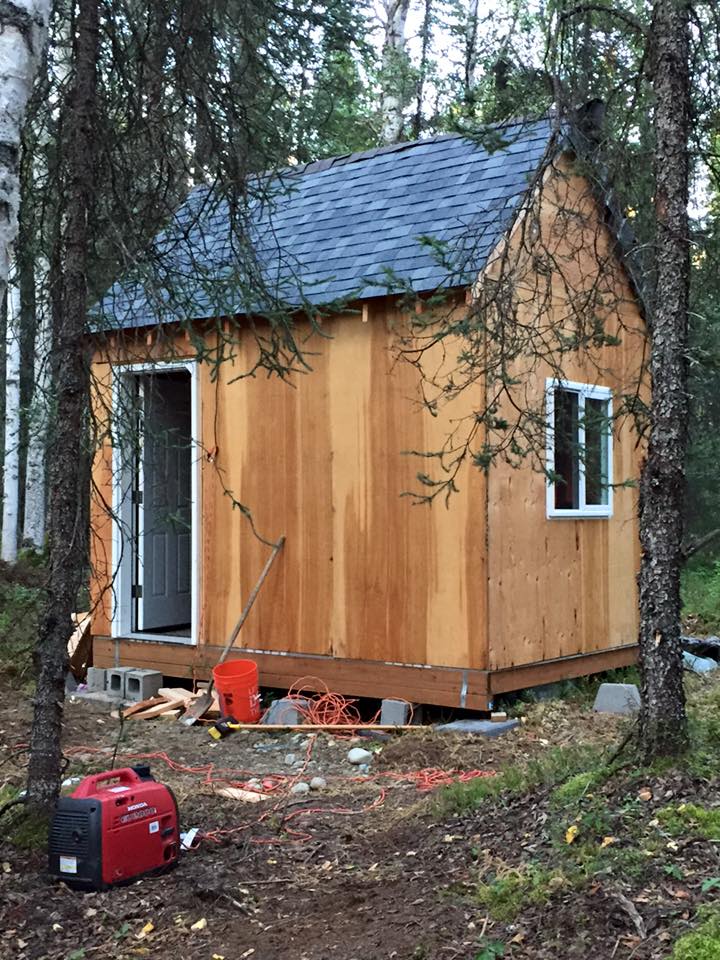
When I first arrived to Alaska in 2014, I soon bought a piece of property in Caswell Lakes, about 20 miles north of Willow, AK. As I began to work on clearing the space for my cabin, I would stay out there in a small backpacking tent. As the summer progressed however, it was clear that I would need to get some more substantial shelter going if I wanted to keep working into the colder months.

In addition, I wanted to have a place to store tools and wood in a secure way. I knew it could be a couple of years at least before I could get my cabin built, and being a software engineer, I really didn’t know much about framing a house. So I decided to build a small 8 foot by 12 foot cabin, which would one day serve as a storage shed for things I wanted to keep out on my land.
The problem was that there was at least a foot of snow on the ground! I didn’t even prepare a spot for the “tiny” cabin, as I called it, but I knew that I was going to need it or I’d unable to make progress until spring came. So I decided to set the floor up on blocks, and dig up the snow as best I could. I shimmed the foundation to level it, knowing that I would need to adjust it when spring came.
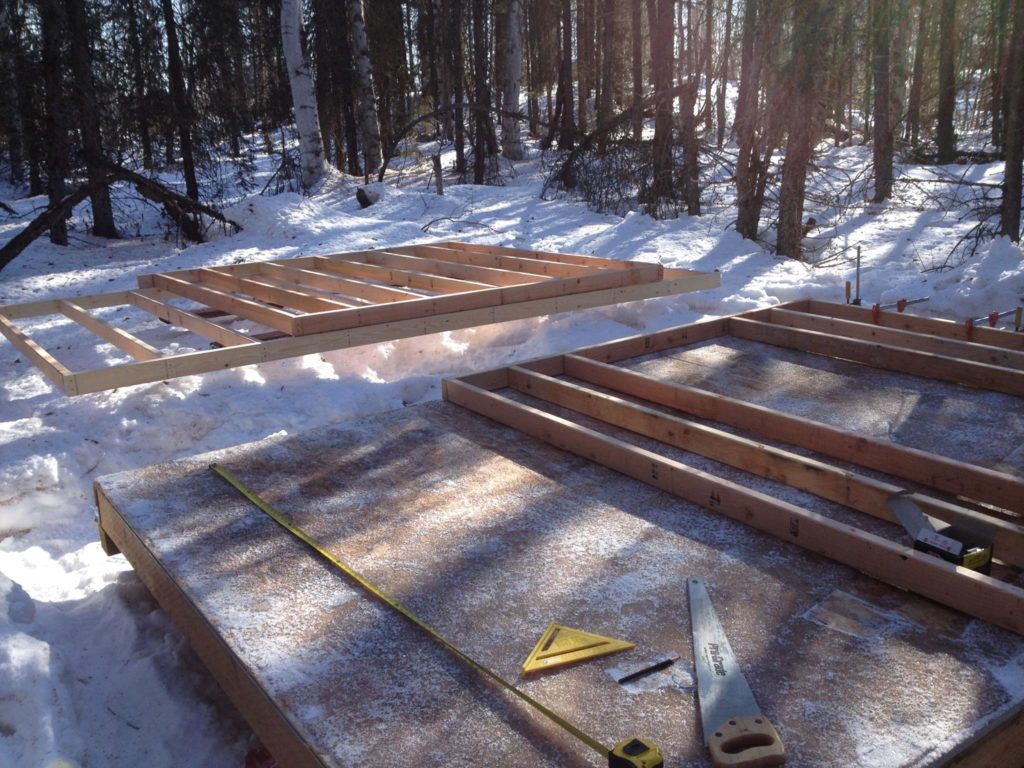
On the day that I framed up the walls, I remember that it was -15 degrees Fahrenheit outside. It was extremely cold, but I was having so much fun that I didn’t mind. When it got to be too cold, I would go for a drive in my truck with the heater on and warm up my feet before getting back to work.
I only really had some experience building skateboard ramps when I was a kid back home. I didn’t have any construction experience, which I feel put me at a disadvantage. But I did have the will to learn and I have a fire burning within me to make my own cabin. So I wasn’t about to let a lack of knowledge hold me back. This lesson was so valuable to my life, as I proved to myself that I can learn and do anything that I put my mind to if I wanted it bad enough.
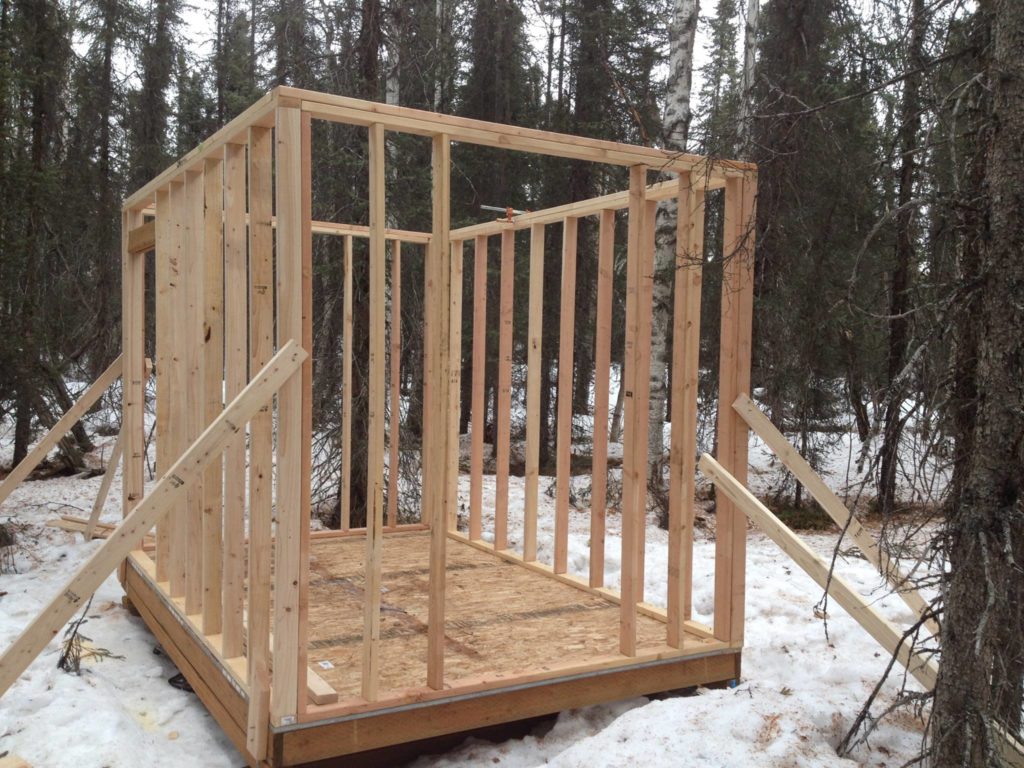
When you live 2 hours away from your cabin land like I did, you don’t get a lot of time out there to work on it. So it didn’t take long before signs of spring started to appear. By mid-march, I was beginning to get the roof rafters together.
I remember that this was the hardest part of building the structure. I cut each roof rafter in Girdwood, Alaska using the bed of my truck as a work bench. I manually cut all 20 of the rafters using a 12/12 roof pitch and including a birdsmouth joint to hold the rafters securely to the top of the walls. To add some structural support, I included the use of hurricane ties to help ensure that the roof could not rip off in wind or during an earthquake.

Since I was doing all of this by myself, the roofing was pretty difficult. I probably climbed up the ladder about 500 times during a weekend while I put everything together. The way that I got it to work was to create some simple jigs made of wood and employ the use of woodworking clamps to hold pieces up so I could assemble the roof.
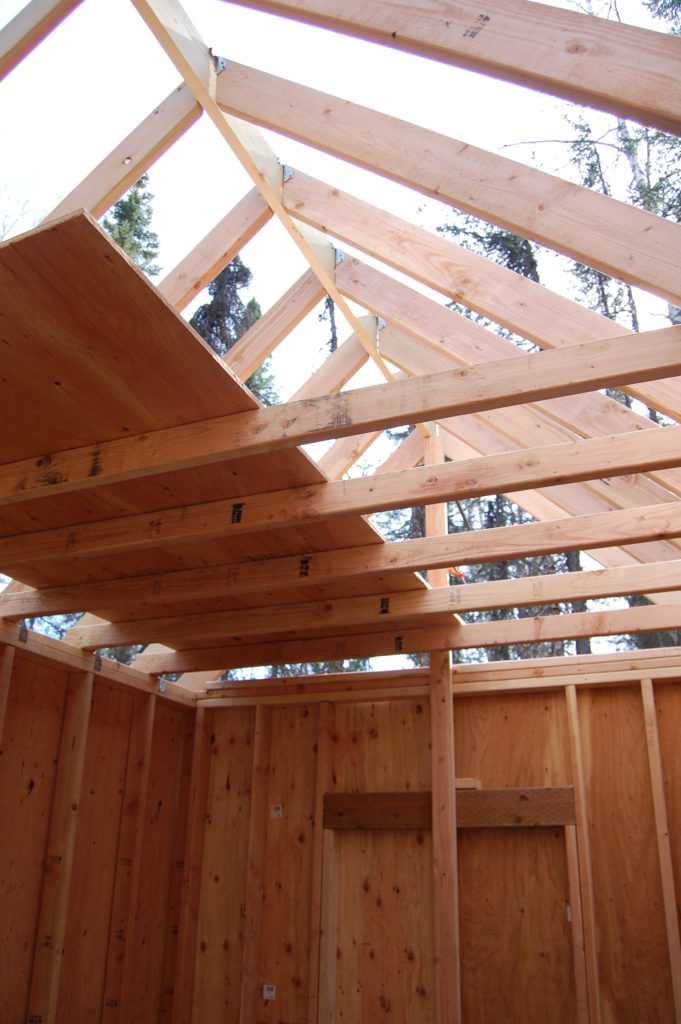
When April 2015 came around and the snow started to melt out at the cabin, I was to the point of getting the plywood up on to the rafters so that I could at least get a little shelter from the weather. It rains a lot in this part of Alaska during certain times of year and it gets old sleeping on the ground in a tent.
Once the plywood was up on the roof securely, I put some tar paper up to help keep water from getting to the wood underneath. At this point, I basically had myself a shed with a steep roof and a very small 8 foot by 6 foot loft. It wasn’t the most fancy place to stay in all of Alaska, but I had gotten at least some basic shelter up out there that I could use to stay warm and out of the weather.
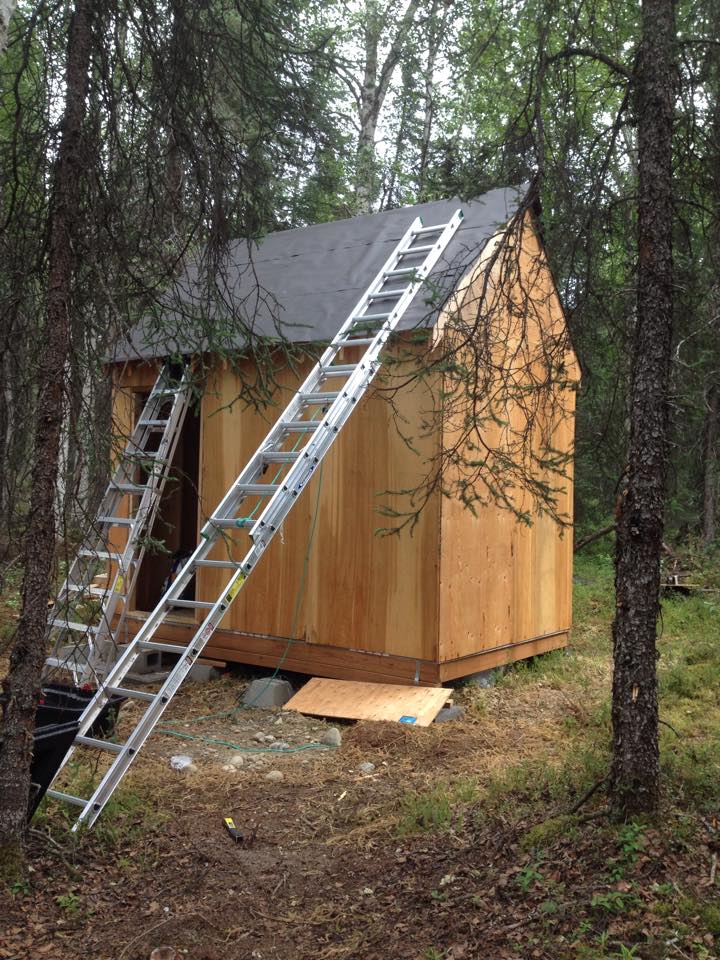
The next step was to get things set up inside to make it a little easier for cooking. So I made myself a crude little shelf in the corner of the cabin to set up my cooking stove if needed and to place things somewhere off the floor.

Finally, I installed a front-door as well as a window. This allowed for me to lock up the cabin when I was away and to get some light into the place. The window was the only part of this cabin in which I used any power tools. I used a sawzall to cut out the window hole and make room for the window to be placed.
It was a good thing I was planning to put in the window that day too! Because on that day I recall that I had accidentally left the keys to the front-door back in Girdwood, 2 hours away! So I ended up just cutting a hole into the wall for the window and then climbing into the hole in order to open the door from the inside!
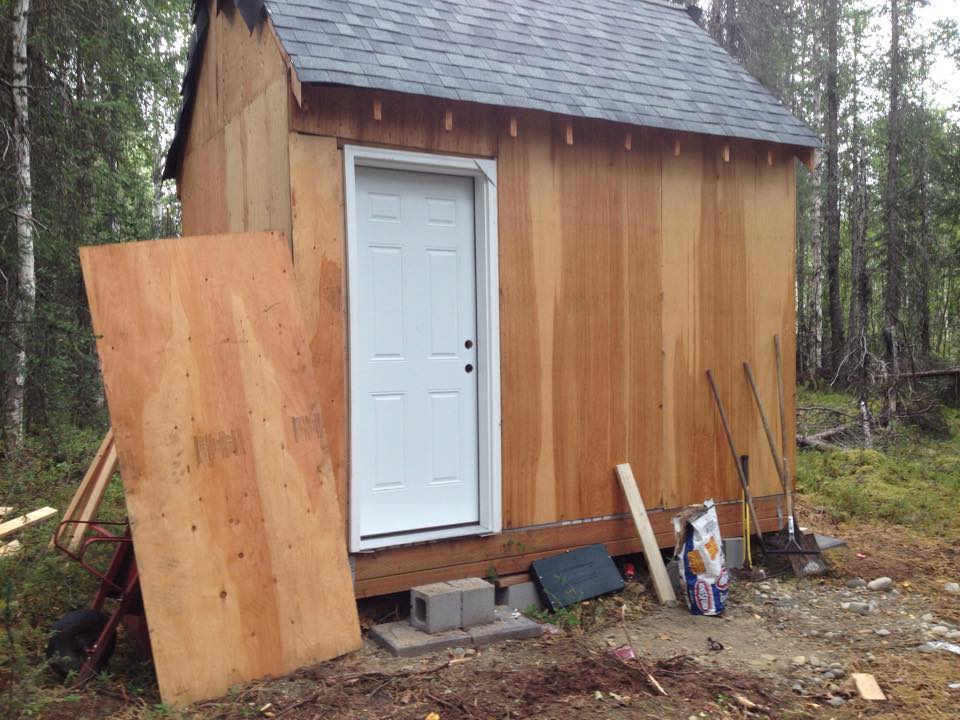
All of this actually ended up taking up most of the summer because it was just my second summer in Alaska and I was spending a lot of time fishing, hiking, camping and traveling around the state as well. Alaska really does provide the ultimate adventure for people who like the outdoors.
Once the roof was up, I also began to spend a little time preparing the space where I was going to build my larger cabin. I had just spent nearly a year getting the first little cabin built, and I would spent a lot of time thinking about the bigger project and trying to apply what I had learned on the first project.

So as winter came on, I decided to insulate the walls using standard pink insulation. I also covered the inside walls with .25 inch plywood sheets in order to make things look a little nicer and to protect me from the insulation.
Also, I put in a little Kni-co Alaskan Stove just as it began snowing for the season. This little stove that was designed for use in large canvas guide tents became an excellent source of heat for the little cabin. This addition make it a lot easier to stay in the cabin even deep into the winter, which quickly became my favorite time of year out at Caswell Lakes.
That was the story of how I built my first tiny cabin in Alaska, completely by myself and without using power tools (except once!) I hope you enjoyed the story, and I look forward hearing your feedback about my story! Thanks again for reading!
